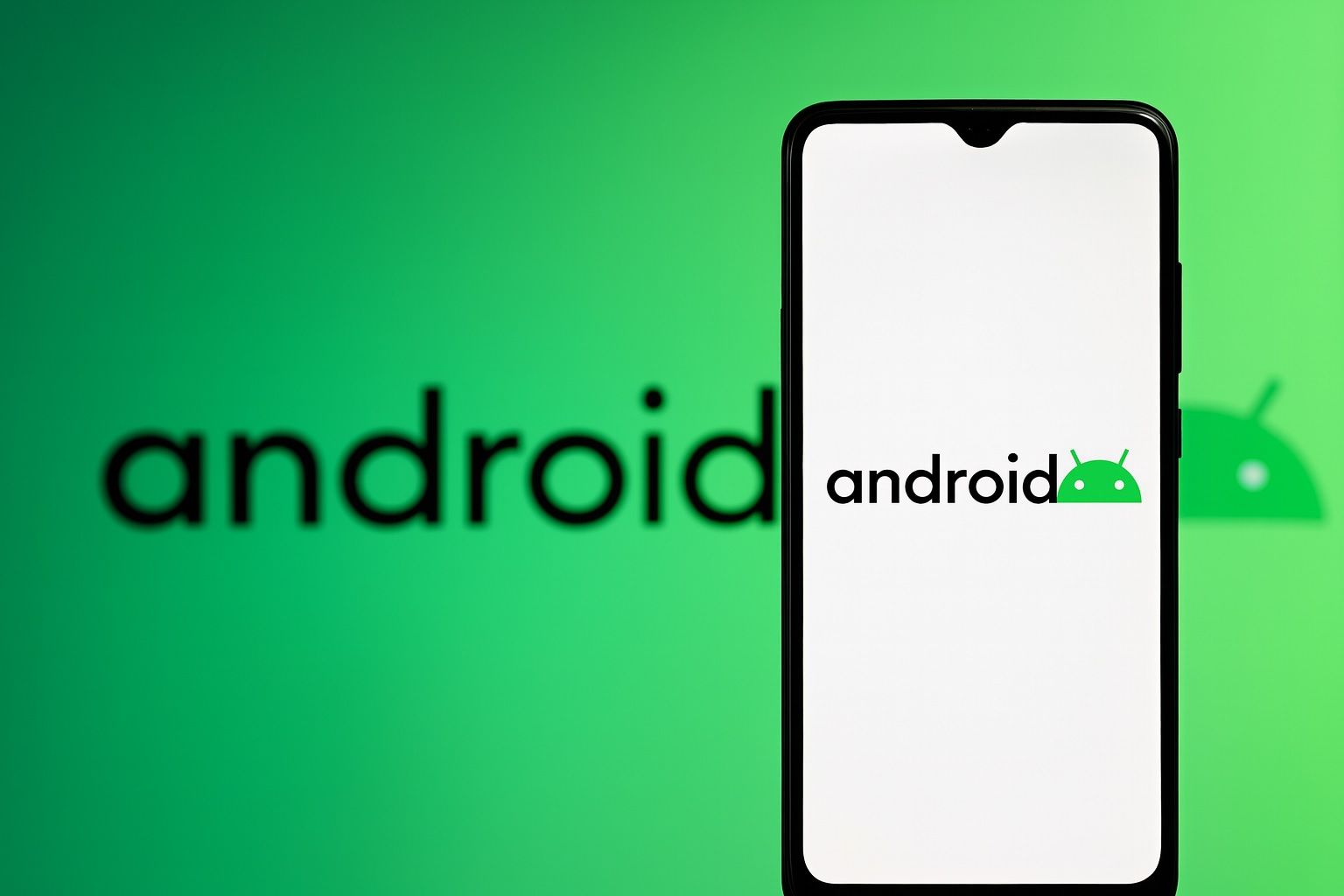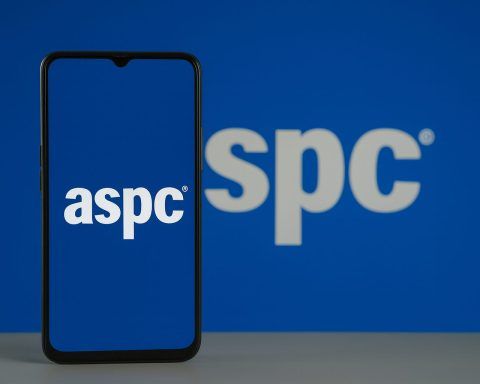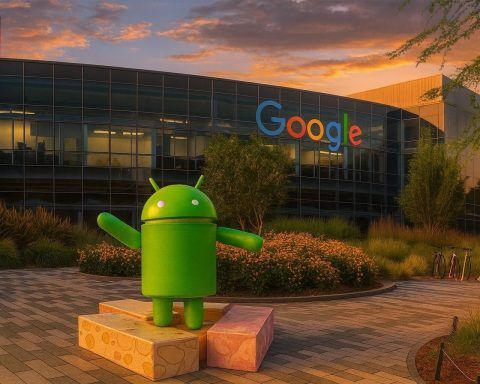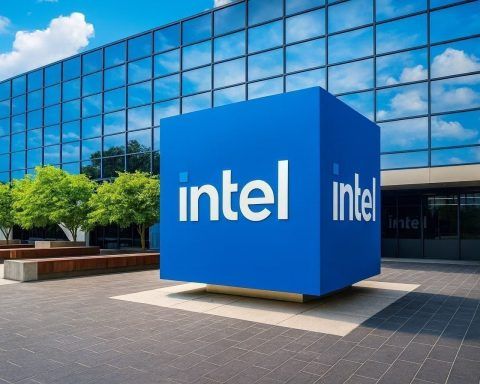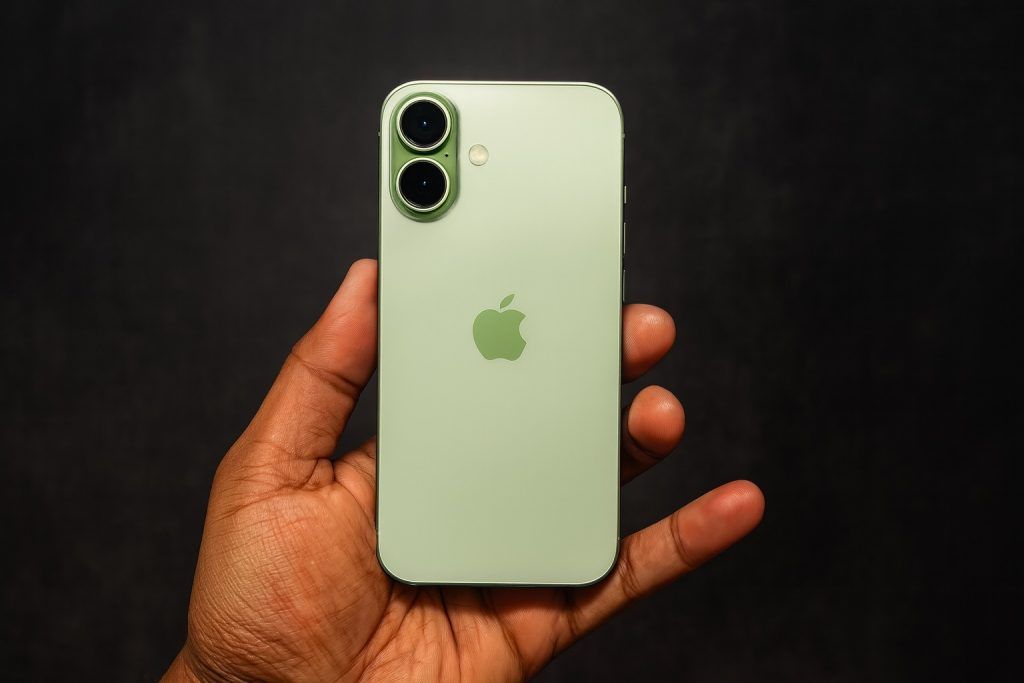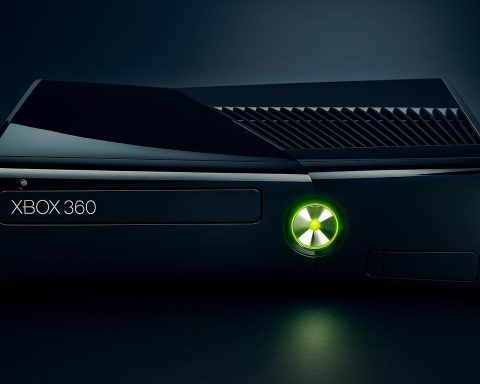- New open-source PS2 emulator launched: ARMSX2 version 1.0 released on Android this week, offering an alternative way to play PlayStation 2 games on mobile devices [1]. It debuted on GitHub (with a quick 1.0.1 patch) and a Google Play Store listing is expected to go live later this week [2] [3].
- Filling AetherSX2’s shoes: ARMSX2 arrives after the pioneering Android PS2 emulator AetherSX2 was abandoned by its developer. Its successor NetherSX2 (a community mod of AetherSX2) kept PS2 emulation alive but is closed-source and built on older code [4]. ARMSX2, by contrast, is fully open-source and built on a modern PCSX2 codebase, aiming to be a more sustainable long-term solution [5] [6].
- Performance trade-offs for now: Unlike AetherSX2/NetherSX2 which run natively, ARMSX2 currently uses a translation layer to recompile PC (x86) emulator code to ARM64 on the fly [7]. This approach enables quick development but means slower performance and more bugs in version 1.0 – early tests found it running games noticeably slower than NetherSX2 and even crashing on some devices [8] [9]. Developers are already addressing these issues and say performance will improve as development continues [10].
- Roadmap and improvements underway: The ARMSX2 team has prioritized fixing stability problems (e.g. crashes on devices with certain Arm Mali and Samsung Xclipse GPUs) and updating to the latest PCSX2 core [11]. A UI overhaul using Google’s “Material You/Expressive” design is planned later on [12]. The team’s ultimate goal is “version parity with PCSX2” on PC – essentially matching the PC emulator’s features and compatibility [13].
- Community & industry outlook: Enthusiasts are excited about an open-source PS2 emulator, believing it will attract more contributors and eventually surpass NetherSX2’s performance [14]. Experts note that ARMSX2’s open nature and up-to-date foundation could make it the better long-term option for Android [15]. The launch highlights how far smartphone hardware has come – today’s flagship phones (e.g. Samsung’s Galaxy S25 Ultra) can potentially handle a 21-year-old console’s library [16]. It also underscores continued interest in retro gaming: Sony’s PlayStation 2 – the best-selling console with over 155 million units sold – still has a devoted fanbase in 2025, though Sony itself isn’t officially involved in these emulator projects (Sony stock sits around $29 per share as of this week [17]).
ARMSX2 Debuts: Turning Android Phones into Mini PlayStations
Have you ever wanted to carry a PlayStation 2 in your pocket? Thanks to a new app called ARMSX2, that retro gaming dream is closer to reality. ARMSX2 is an Android emulator that lets users run PS2 games on modern phones. It just hit a major milestone – version 1.0 went live over the weekend – marking the emulator’s first stable release [18]. Early adopters could already test preview builds since August, but now the project is official, complete with open-source code and (soon) an easy install via Google Play Store [19] [20]. In other words, gamers will no longer need to hunt down APK files or sideload; ARMSX2 will be just a download away once Google approves the Play Store listing later this week.
The timing couldn’t be better. PS2 emulation on Android has been in a bit of limbo for the past couple of years. The scene’s trailblazing app, AetherSX2, was discontinued after its developer cited harassment and disagreements in the community [21]. In its wake, a modified version called NetherSX2 took up the mantle, improving on AetherSX2’s code but without open-source transparency [22]. Many fans feared that Android’s best PS2 emulator was a dead-end, stuck on an aging codebase with no official support. ARMSX2’s arrival changes that narrative. Created by developers known as “Moon” (MoonPower) and jpolo1224 using a fork of the PCSX2 project, ARMSX2 is fully open-source and aims to carry PS2-on-Android forward on a more solid foundation [23] [24]. As Android Authority reports, “ARMSX2 could be the better long-term solution for Android” because of its open nature and more up-to-date core code [25]. In short, ARMSX2 is not just another fork – it’s a reimagining of PS2 emulation built for the future.
Under the Hood: Modern PCSX2 Core with a Twist
One of ARMSX2’s biggest differentiators is what’s under the hood. Instead of building off the old AetherSX2 code, ARMSX2 draws from the latest PCSX2 (the popular PS2 emulator for PC) as its core [26]. This newer codebase brings years of fixes and optimizations that should help more games run correctly. For players, that means titles that gave other emulators trouble might fare better on ARMSX2 (in theory, at least). The Economic Times notes that ARMSX2’s updated foundation “provides improved fixes and optimizations for problematic games” compared to NetherSX2’s older code [27]. Early signs are promising – community members were surprised to see heavy games like God of War already listed as “Perfect” in ARMSX2’s compatibility list (likely thanks to inheriting PCSX2’s progress) [28] [29].
However, ARMSX2’s approach also introduces a performance twist. Because PCSX2 was originally written for x86 PC processors, ARMSX2 currently includes a translation layer to run that code on smartphones’ ARM chips [30]. In practice, the emulator recompiles or translates x86 instructions to ARM64 in real time while also emulating the PS2 hardware. This is a clever shortcut — it allowed the developers to get a working app out faster by reusing PC code — but it’s not the most efficient method. The extra translation step adds overhead, so games don’t run as fast as they could on native ARM code [31] [32]. By contrast, AetherSX2/NetherSX2 had a custom ARM dynamic recompiler tailored for Android, giving them a speed edge on the same device.
In plain English, ARMSX2 sacrificed some short-term speed for the sake of code modernity and openness. How much slower is it right now? Early users say NetherSX2 still delivers higher frame rates and smoother play at the moment [33]. Demanding titles that NetherSX2 can handle might chug on ARMSX2 in its 1.0 state, and some games may not boot at all yet. The ARMSX2 team acknowledges this “lackluster” performance and bugs in the initial release [34]. The good news is they aren’t stuck with this design forever. The developers have hinted that ARMSX2 could adopt more native ARM code down the line, removing the translation bottleneck as the project matures [35] [36]. In fact, their public roadmap specifically mentions hopes of moving away from x86 translation toward a true ARM recompiler in future updates [37]. For now, users should temper expectations: ARMSX2 1.0 is more about laying a robust foundation than delivering instant perfect performance.
Launch Pains: Bugs, Crashes and Quick Fixes
As with many 1.0 launches, ARMSX2 had some early hiccups. Testers over the weekend reported that the app was unstable on certain phones – for example, it tended to crash consistently when loading a game or even just booting the PS2 BIOS on some devices [38]. An Android Authority journalist tried ARMSX2 on a Vivo X Fold 5 and an iQOO X300 Pro (both high-end 2025 phones) and couldn’t get any game to run due to repeated crashes [39]. This wasn’t an isolated case; user forums and Reddit threads lit up with similar bug reports, indicating a widespread stability issue in the initial build [40]. Rather than deny the problems, the ARMSX2 team responded quickly – they not only acknowledged the crashes but also rolled out a minor update (version 1.0.1) almost immediately to start addressing them [41]. On their Discord channel, the developers explained that certain graphics drivers were causing issues and that they’re working on fixes.
Indeed, the team published a rough development roadmap outlining what comes next [42]. Priority number one is resolving compatibility problems with specific GPUs prevalent in Android devices. Notably, phones using Arm Mali GPUs (common in many mid-range chips) or Samsung’s Xclipse GPU (found in newer Exynos processors) have been problematic [43]. These are the same spots where other emulators have struggled too, since graphics emulation depends heavily on drivers. ARMSX2’s roadmap puts a “high priority” on ironing out GPU-related bugs and updating the emulator’s core to the latest PCSX2 codebase [44]. In plainer terms, we should expect rapid patch updates aimed at making the app more stable across a wider range of phones over the coming weeks.
Lower on the priority list but still planned is a visual overhaul of the app’s interface [45]. Right now ARMSX2’s UI is pretty bare-bones (a common trait for emulator apps). The developers want to implement a “Material You” design – Google’s modern Android UI style – to make the menus more polished eventually [46]. That said, cosmetics can wait; functional stability is clearly the focus for the near term. The silver lining is that being open-source, ARMSX2 may see outside contributors help fast-track some improvements. Within days of release, community developers were already combing through the code on GitHub and suggesting fixes. This collaborative potential is exactly why many in the Android emulation community are optimistic about ARMSX2 despite its bumpy launch. “Since it’s open source lots of devs will be able to look at the code and improve the overall functionality,” one enthusiast noted, predicting ARMSX2 will indeed overcome its early issues and “surpass Nether in the future” [47].
Showdown: ARMSX2 vs. NetherSX2 (Open-Source vs. Closed)
Inevitably, ARMSX2 is being compared to the incumbent champion, NetherSX2. Both aim to let Android users play PS2 games, but the two projects have very different philosophies and trajectories. NetherSX2 was essentially a salvage operation – when original dev Tahlreth stopped updating AetherSX2, modders took that app (which was not open-source) and tweaked it, extending its life. The result is a high-performance emulator that still runs many games excellently on Android, but it’s built on a foundation of code that can’t be openly developed by the community [48] [49]. NetherSX2’s closed nature means only its maintainer(s) can modify the core, and it relies on what was state-of-the-art a few years ago. It’s impressively efficient thanks to that legacy, but there are concerns about its long-term evolution – especially if Android or device hardware changes significantly.
ARMSX2, on the other hand, is a fresh start with openness at its core. It uses the PCSX2 core (which is under active development for PC) and invites any developer to contribute improvements [50]. In the short run, this means ARMSX2 is playing catch-up: right now NetherSX2 outperforms ARMSX2 in most scenarios, offering higher frame rates and compatibility on today’s phones [51]. If your goal is to play God of War II or Gran Turismo 4 on Android today, NetherSX2 might still be the easier path due to its optimizations. Time Extension frankly notes that due to the translation overhead, “performance is noticeably worse [in ARMSX2] than it is in NetherSX2” at the moment [52]. However, ARMSX2 is quickly improving and has a much greater growth potential. Every update to PCSX2’s codebase can be merged into ARMSX2, and as Android devices get faster, the translation penalty will matter less. More importantly, ARMSX2’s open model means if one developer steps away, others can continue the work – the project won’t die on the vine. That resilience is critical; the community learned a hard lesson when AetherSX2’s single maintainer quit, leaving users in the lurch [53].
Even industry observers are watching this dynamic. Android Authority’s gaming editor remarked that while NetherSX2 “is still the more performant and compatible emulator at the moment,” ARMSX2 “could be the better long-term solution for Android owing to its open nature and more recent foundation” [54]. In other words, community-driven development may trump one-man heroics over time. This sentiment is echoed by many veteran emulator users. They view ARMSX2 as an investment in the future of PS2 emulation on smartphones – perhaps a bit rough today, but likely to eclipse its predecessor as features get added and kinks get ironed out. It helps that ARMSX2’s developers are transparent and communicative (via Discord and GitHub), engaging with feedback and bug reports, which boosts confidence. Meanwhile, NetherSX2 remains an important stopgap; there’s no rivalry in the classic sense, as even ARMSX2’s team acknowledges NetherSX2’s contributions. The two apps serve slightly different audiences: one prioritizing immediate performance, the other prioritizing openness and longevity. Many hardcore retro gamers will probably keep both installed – NetherSX2 for playing now, ARMSX2 for watching its progress – at least in the near term.
Broader Implications: Tech Power & Retro Appeal
Beyond the back-and-forth of emulator enthusiasts, ARMSX2’s debut speaks to some bigger trends in tech and gaming. First and foremost, it showcases just how powerful modern smartphones have become. The PlayStation 2 was a 300 MHz, 128-bit console from the year 2000; it was a beast in its day, but few would have imagined back then that a pocket-sized phone would one day imitate it via software. Yet here we are in 2025: a typical high-end Android handset now packs an 8‑core CPU and advanced GPU that can recreate PS2 games in software – and this will only get easier as chips improve. It’s telling that NotebookCheck mentions ARMSX2 being tested on a Samsung Galaxy S25 Ultra [55]. That’s a current flagship phone, and presumably one equipped with Qualcomm’s latest Snapdragon or similar powerhouse silicon. These devices are reaching performance levels where even console emulation is on the table (albeit with effort). In fact, chipmakers are betting big on mobile performance and AI capabilities right now – for example, Qualcomm (NASDAQ: QCOM) stock recently jumped over 12% in a single day (to about $189) after unveiling new AI-oriented chips and strong earnings [56]. The hardware arms race in mobile is benefitting more than just AI and photography; it’s enabling things like high-fidelity gaming and emulation, too.
Another takeaway is the enduring appeal of retro games. PlayStation 2 remains iconic – its library of games (around 4,000 titles) still captivates gamers who grew up in the 2000s. Many of those classics aren’t easily accessible on modern platforms (Sony has been slow to release PS2 games on PS4/PS5 or other services in large numbers). This is where emulation steps in to preserve gaming history. Projects like ARMSX2 exist largely because there’s user demand to experience Gran Turismo, Final Fantasy X, or Shadow of the Colossus on today’s devices. It’s a fan-driven form of preservation and nostalgia. While emulators operate in a legal gray area – the software itself is legal, but users are supposed to own the original game discs and dump their own BIOS – they undeniably extend the life of content that would otherwise be stuck on obsolete hardware. Even a company like Sony (which made the PS2) tacitly benefits from this cultural relevance, though it doesn’t directly profit. Sony Group’s stock (NYSE: SONY) is trading around $28–$29 per share this week [57], with investors focused on its blockbuster PS5 console and Spider-Man game sales. The PS2 is ancient history in financial terms. Yet the goodwill and brand loyalty fostered by enthusiasts keeping the PS2 legacy alive can feed into the PlayStation brand’s strength. It speaks volumes that nearly 23 years after launch, PS2 games are headlining tech news because of community efforts.
There’s also a platform politics angle. ARMSX2’s smooth launch (pending Play Store approval) highlights how Android’s openness enables innovation that is tough on other platforms. On Apple’s iOS, for instance, emulators face heavy restrictions – one PS2 emulator called “Play!” exists for jailbroken iPhones, but it runs very poorly without just-in-time compilation (which Apple forbids for third-party apps) [58]. In contrast, Google’s Android has generally allowed emulators on the Play Store so long as they don’t include copyrighted BIOS or game files. This open ecosystem has made Android a haven for retro gaming apps, from old console emulators to even new Nintendo Switch emulators on some devices [59]. However, the freedom may not be absolute: starting next year, Google will require developer verification for apps even outside the Play Store, a policy some fear could hamper emulator distribution in the future [60]. For now, though, ARMSX2’s acceptance into Google Play (with the app currently under review) suggests Google isn’t shutting the door on emulators yet. On the contrary, allowing such enthusiast apps could give Android an edge with gamers. Alphabet Inc – Google’s parent company – has a market incentive to keep Android attractive, and its stock (NASDAQ: GOOGL) reflects optimism in the platform’s growth (Alphabet shares trade around $268 at present) [61] amid a broader tech rally.
Outlook: Updates on the Horizon and What to Watch
Looking ahead, the future for ARMSX2 appears bright if the development momentum continues. The team behind it has earned goodwill by quickly fixing issues and communicating transparently. In just the few days since launch, they’ve shown a commitment to rapid iteration – which bodes well for a project still in early days. We can expect a flurry of small updates (v1.0.2, 1.0.3, etc.) in the coming weeks to tackle crash bugs and improve compatibility. One likely inflection point will be when ARMSX2 integrates an ARM-native recompilation engine (replacing or augmenting the current x86 translation). If and when that happens, we could see a big leap in performance that closes the gap with NetherSX2. The developers have explicitly stated this as a hopeful goal, so it’s on the roadmap [62]. Another area to watch is how quickly ARMSX2 can broaden its game compatibility list. At launch, only a few dozen games were fully tested, but since ARMSX2 draws from PCSX2’s code, its compatibility could expand rapidly [63]. We might soon see hundreds of PS2 titles running on Android, including many of the tricky ones. Enthusiast testers are already reporting results: some early feedback notes that certain games run identically to PCSX2 (which is a great sign), while others expose unique Android-specific bugs that will need attention.
The community response will also guide ARMSX2’s evolution. Because it’s open-source, skilled users can directly help improve it. The project’s GitHub is open for contributions, and we may see collaborative efforts optimizing the code for Qualcomm Snapdragon chipsets or adding custom features (like touchscreen controls enhancements or shader support). Interest is high – the Reddit community r/EmulationOnAndroid has been buzzing with ARMSX2 discussions, tips, and even workarounds for issues. Many veteran emulation fans emphasize the importance of supporting this project. “We shouldn’t be relying on the future of NetherSX2 and should be doing what we can to support new developers… in a true open source format that will help protect the future of PS2 emulation on Android/ARM,” one community member wrote, underscoring the almost philosophical drive behind ARMSX2 [64]. It’s not just about one app, but about ensuring an entire platform (PS2-on-Android) remains viable and advancing.
For casual gamers, all this inside-baseball about open source and translation layers boils down to a simple proposition: more games, more easily, on more devices. By later this year or early 2026, you might be able to fire up an Android phone or tablet, install ARMSX2 from Google Play, and play a vast catalogue of PS2 classics anywhere, legally (with your own game dumps) and free of charge. That’s a pretty incredible reality. It could even pressure companies to step up their official retro offerings. Sony, for instance, might eventually consider bringing older PlayStation titles to mobile or at least to streaming services, seeing the demand. But even if the corporations stay on the sidelines, the fans have things covered. ARMSX2’s emergence ensures that the PS2’s legacy will live on in the mobile era, powered by community passion and ever-improving tech. As ARMSX2 matures, keep an eye on those version release notes – each update will likely unlock better speeds or new games. It’s a rare and exciting convergence of nostalgia and cutting-edge development. In the meantime, dust off your old PS2 discs (or ISO files) – your phone is about to become a PlayStation 2, and this is only the beginning of what could be a retro gaming renaissance on Android.
Sources: Android Authority [65] [66]; The Economic Times [67] [68]; Time Extension [69] [70]; NotebookCheck [71] [72]; Reddit (r/EmulationOnAndroid) [73] [74]; Steam Deck HQ [75] [76]; Market data from Yahoo Finance and Morningstar [77] [78] [79].
References
1. www.androidauthority.com, 2. economictimes.indiatimes.com, 3. www.timeextension.com, 4. economictimes.indiatimes.com, 5. economictimes.indiatimes.com, 6. www.timeextension.com, 7. www.notebookcheck.net, 8. www.timeextension.com, 9. economictimes.indiatimes.com, 10. www.timeextension.com, 11. economictimes.indiatimes.com, 12. www.androidauthority.com, 13. www.notebookcheck.net, 14. www.reddit.com, 15. www.timeextension.com, 16. www.notebookcheck.net, 17. www.morningstar.com, 18. www.notebookcheck.net, 19. economictimes.indiatimes.com, 20. www.timeextension.com, 21. www.notebookcheck.net, 22. www.notebookcheck.net, 23. steamdeckhq.com, 24. steamdeckhq.com, 25. www.timeextension.com, 26. economictimes.indiatimes.com, 27. economictimes.indiatimes.com, 28. www.reddit.com, 29. www.reddit.com, 30. www.notebookcheck.net, 31. www.notebookcheck.net, 32. www.timeextension.com, 33. www.timeextension.com, 34. www.notebookcheck.net, 35. www.notebookcheck.net, 36. steamdeckhq.com, 37. steamdeckhq.com, 38. www.androidauthority.com, 39. www.androidauthority.com, 40. economictimes.indiatimes.com, 41. economictimes.indiatimes.com, 42. economictimes.indiatimes.com, 43. economictimes.indiatimes.com, 44. economictimes.indiatimes.com, 45. www.androidauthority.com, 46. www.androidauthority.com, 47. www.reddit.com, 48. www.notebookcheck.net, 49. www.notebookcheck.net, 50. www.notebookcheck.net, 51. www.timeextension.com, 52. www.timeextension.com, 53. www.notebookcheck.net, 54. www.androidauthority.com, 55. www.notebookcheck.net, 56. finance.yahoo.com, 57. www.morningstar.com, 58. www.notebookcheck.net, 59. www.notebookcheck.net, 60. www.timeextension.com, 61. appreciatewealth.com, 62. steamdeckhq.com, 63. www.reddit.com, 64. www.reddit.com, 65. www.androidauthority.com, 66. www.androidauthority.com, 67. economictimes.indiatimes.com, 68. economictimes.indiatimes.com, 69. www.timeextension.com, 70. www.timeextension.com, 71. www.notebookcheck.net, 72. www.notebookcheck.net, 73. www.reddit.com, 74. www.reddit.com, 75. steamdeckhq.com, 76. steamdeckhq.com, 77. finance.yahoo.com, 78. www.morningstar.com, 79. appreciatewealth.com
